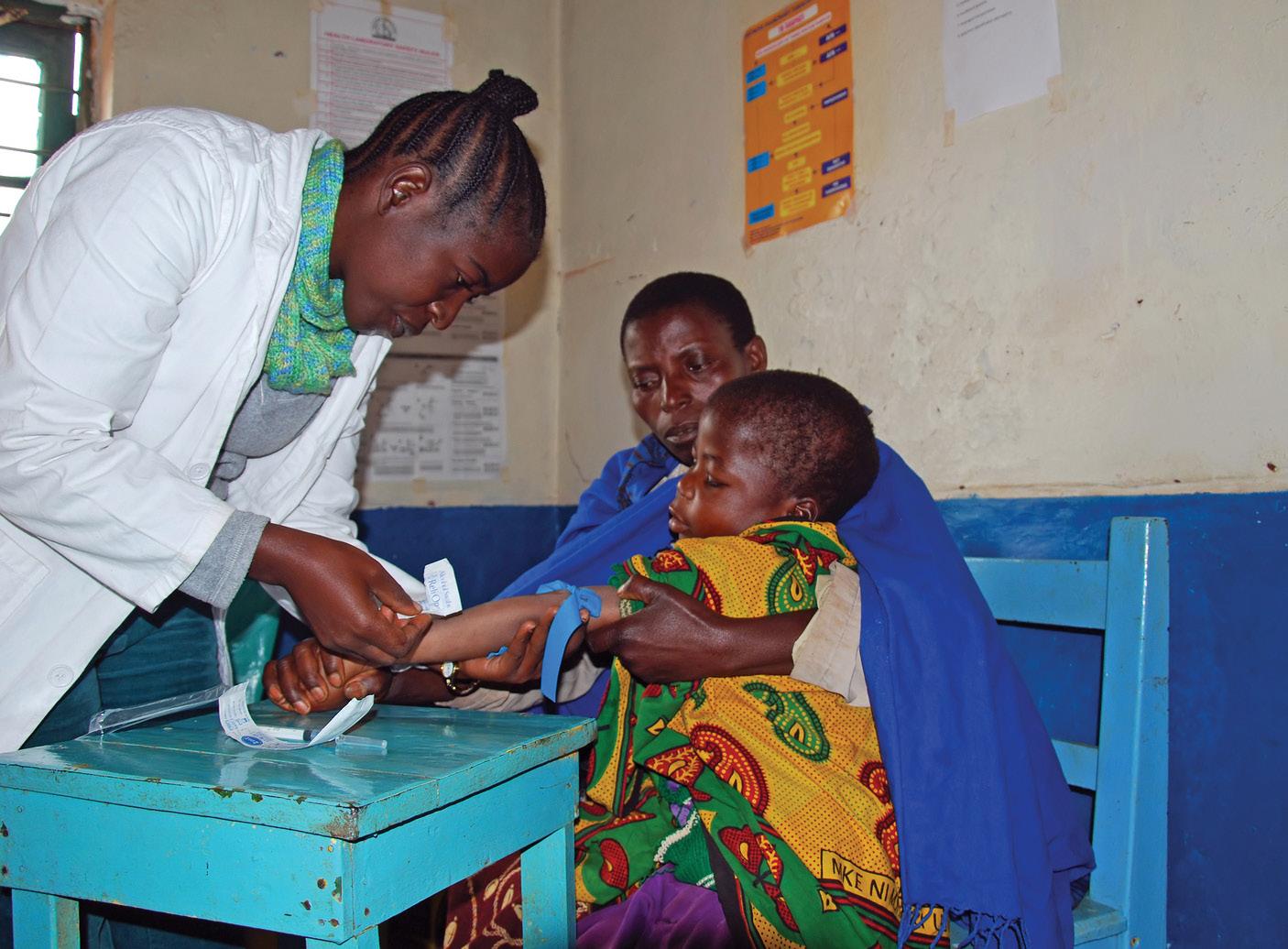
4 minute read
Topic Area 6: Maintaining United States Involvement in Pandemic Preparedness & Global Health Security
from Global Leadership at a Crossroads: Are we Prepared for the Next Pandemic? SECOND EDITION
by Texas A&M School of Veterinary Medicine & Biomedical Sciences
MAINTAINING UNITED STATES INVOLVEMENT IN PANDEMIC PREPAREDNESS & GLOBAL HEALTH SECURITY Pandemics Are a Global Problem Pandemics, as the name implies, are a global problem. Disease is a microscopic enemy that can travel around the world inside human bodies before there are any outward signs of trouble. Diseases can travel by car, rail, ship, airplane, or foot. It can travel with passengers or it can travel with cargo. Even when complete border shutdown does not occur, pandemics can have a large global economic impact. During the Ebola outbreak, the impact on Guinea’s GDP was estimated to be a 1% decrease (Hamilton, 2014). This is due in part to disruption in the tourism industry, but also because the border closures in West Africa had a negative impact on trade. Additionally, it is estimated that Toronto lost $1 billion as a result of the SARS outbreak, and this is without a large disruption in
goods trade (CBC News, 2003). The important takeaway from these examples is that disease has a significant economic impact, and this impact will only be exacerbated by closing borders. Preparing the International System for Response The international community should ensure that the international system is willing and able to respond to disease outbreaks throughout the world. Pandemic preparation and response cannot fall by the wayside during the time between pandemics. Each country should be aware of its response capabilities, who will serve in response leadership roles, and which entities from the national government will work with international organizations like WHO and the UN. Understanding these elements requires consistent and meaningful discussion, financial commitment, and training. All players in the international system have an obligation to know where they fit into response and to be prepared.
Advertisement
Strengthening the Global Health Security Agenda The Global Health Security Agenda (GHSA) was launched by the United States in 2014 as a fiveyear initiative to increase global preparedness and response capabilities for infectious disease outbreaks. The GHSA has the goal of making the world safe and secure from infectious diseases of any cause (natural, accidental, and intentional). The GHSA is implemented through 11 action packages to improve capabilities to prevent, detect, and respond to outbreaks. Importantly, the GHSA goes beyond traditional public health to include animal health and biosecurity, antimicrobial resistance, mitigating zoonotic disease spillover from animals to humans, creating emergency operations centers, laboratory biosafety/biosecurity, and a requirement to work with law enforcement. To date, the United States has been the largest contributor to the initiative, but other countries are also making significant contributions. However, with only one year left before coming to the end of the five-year milestone, there is no sign that the Trump Administration plans to renew the initiative. The former Secretary of Health and Human Services (HHS), Tom Price, announced to the World Health Assembly in May 2017 that the United States remains committed to GHSA, but many are concerned GHSA will not survive without significant United States involvement and support (Nuzzo, Ciero, & Inglesby, 2017). Some argue that GHSA can only work in stable, middle income countries because failed states or countries going through massive shocks, such as famine, will not have the motivation or ability to conduct the Joint External Evaluation assessments (JEE). While this is true, GHSA has increased the ability to identify specific gaps in the disease preparedness system with a goal to target available resources and demonstrate accountability for donors, which is a step in the right direction for creating a stronger international system to prevent, detect, and respond to pandemics.
RECOMMENDATIONS
15. Change the way infectious disease problems are framed. Understanding the potential impact of a pandemic can be difficult, and the impact can vary based on the assessment measurement used (morbidity, mortality, economic impact,
adjusted disability life years, etc.). Despite recent outbreaks, it continues to be difficult to convince people and governments to invest in preparing for the next pandemic. The international community needs to reframe the conversation from something that might happen to something that will happen with catastrophic economic impacts that could erode regional stability and international security. Additionally, combining the conversation of bioterrorism and potential negative impacts of synthetic biology with the conversation about pandemic preparedness and response could help to encourage investment. 16. Increase international response capacity. In line with changing the way problems are framed is increasing international response capacity. As the 2014 Ebola, 2016 Zika, and the ongoing plague outbreak in Madagascar demonstrate, large infectious disease outbreaks requiring international support are becoming more common. WHO has made progress in addressing Ebola after-action findings to

improve their ability to support member states and to scale up their own capabilities to react more quickly to disease outbreaks. However, continual evaluation of response effectiveness, quality, and ability to work effectively with regional WHO organizations is important to make sure that these abilities are fully established, resourced, and sustained. All countries, including but not limited to the United States, should continue to make financial contributions to international health security that increase the capacity of vital organizations to respond to international disease emergencies. Member states should establish a reserve public health corps that can provide personnel surge capacity. Emergency funds should be readily available for all response needs. Delays in response because WHO, responding member states, and the United States response teams do not have access to funds coupled to a functioning international response framework could be the difference between containing an outbreak at its source and a pandemic.










